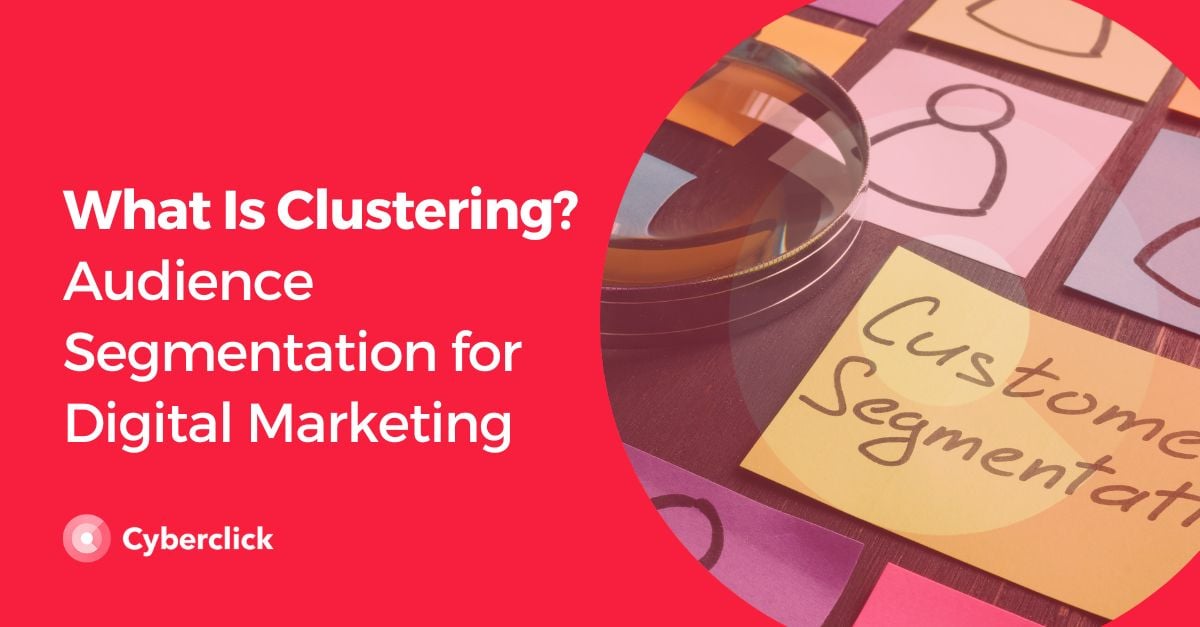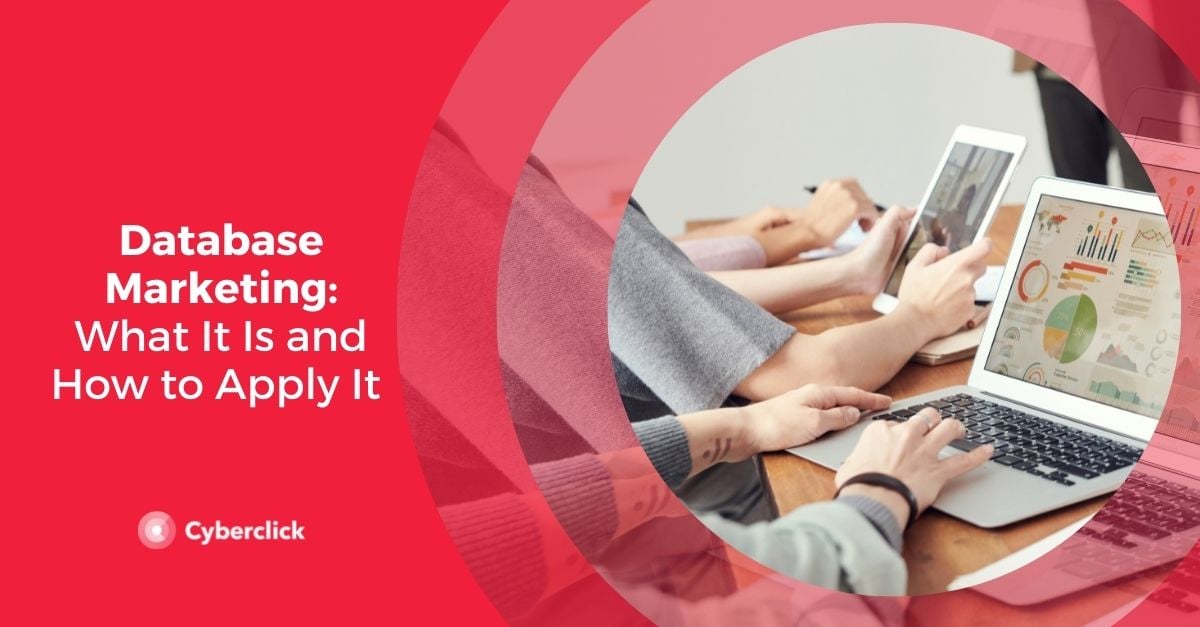Do you aspire to understand your customers better and deliver precisely what they need? Look no further than clustering! This ia a powerful technique that can help you achieve your goal by leveraging data science.
In this article, we will explain what clustering is and how you can implement it in your business to segment your audience effectively.
What Is Clustering?
Clustering is a technique used to identify and differentiate groups of customers within a database. By applying data science algorithms, patterns in the database are recognized, enabling the creation of distinct customer groups that share similarities.
Differences Between Clustering and Audience or Customer Segmentation
The main difference between clustering and audience or customer segmentation is their accuracy. While audience segmentation relies on traditional methods, clustering utilizes mathematical criteria, data science, or machine learning algorithms. This advanced approach allows the groups to be constantly refined and updated, providing more valuable insights for the brand.
In addition, clustering allows for grouping audiences based on complex variables such as interests, motivations, or purchasing behavior.
Netflix is a prime example of a company that successfully utilizes clustering to enhance its recommendation system and identify promising original series. By creating approximately 2,000 clusters or groups with similar tastes, the platform has a highly successful recommendation system that effectively suggests to viewers what to watch at any given moment. Furthermore, this approach empowers the company to decide which original series to invest in.
It is worth noting that clustering is not limited to recommendation systems alone but also serves as a valuable tool for complementing customer segmentation and refining existing customer profiles. Through clustering, essential data can be identified and recognized, which may have otherwise gone unnoticed without the application of this method.
Leveraging Clustering
Clustering proves to be highly beneficial for brands as it enables them to identify the different types of audiences they have. With this knowledge, brands can design effective digital and traditional marketing strategies tailored to each specific group of audiences.
Imagine a company that sells its products through its ecommerce and physical store. This company decides to implement clustering and discovers that its brand has three distinct groups of customers, one of which was previously unknown. According to the data, this particular group engages in online purchases, generates substantial revenue, and exhibits high loyalty.
With the help of clustering, the brand can develop a digital marketing and sales strategy specifically tailored to this newly identified group. As a result, the company experiences significant growth.
Benefits of Clustering
- Learn more about the diverse audience segments associated with your brand.
- Identify unique behavioral patterns within each audience group.
- Design more effective strategies by enhancing existing approaches or complementing them.
- Prioritize customers and focus on actions likely to increase customer loyalty or sales.
- Attract new customers to the brand.
- Increase customer retention rates.
- Address customers’ actual needs more accurately.
- Achieve a faster, more precise, and more accurate analysis.
- Enhance the relationship with your customers.
Characteristics of Cluster Groups
Each group is generated through clustering techniques consistent with customers who exhibit as much similarity as possible within the group itself. Simultaneously, the groups are designed to be as distinct as possible. In other words, the objective is to achieve homogeneity within each group while promoting heterogeneity among the different groups.
Netflix: A Successful Case of Clustering
As highlighted above Netflix is a great example of the success you can achieve with clustering. Around four years ago, the streaming giant faced a significant challenge: users were becoming overwhelmed by the vast amount of content available. To address this issue, Netflix turned to clustering as a solution and grouping its audience based on individual tastes and preferences rather than demographic factors like age, gender, or location. This criterion was also applied to group the available titles.
By implementing this clustering method, Netflix could showcase only 40 to 50 titles on each user’s home screen that aligned with their specific interests. This prevented people from feeling overwhelmed and attracted them with personalized recommendations, significantly increasing their likelihood of staying on the platform.
Clustering played a pivotal role for Netflix as the company had only a few seconds to convince users to remain subscribed rather than switch to competitors. The personalized experience achieved through clustering became a critical factor in Netflix’s path to success.
Even if your company operates in a different sector, you may also face the challenge of capturing the attention of your target audience in a limited timeframe, persuading them not to choose your competitors. In this context, clustering can prove to be a valuable ally.
How to Carry Out Clustering
In the initial step of the clustering process, it is essential to have a robust database containing a large volume of detailed information about user interactions with your brand. This data can include metrics such as website visits, purchase frequency, types of products or services, and purchase dates. The comprehensiveness of your database directly influences the accuracy and value of the clusters extracted by the algorithm.
The larger and more comprehensive your database, the more precise and insightful the resulting clusters will be. But be careful! It is crucial to ensure the quality of the information within your database. Inaccurate or unreliable data can lead to incorrect groupings and which will not only be ineffective but can also potentially harm your goals.
To ensure the quality of your data, we recommend performing data normalization, which involves organizing and standardizing your data in a structured manner. This process eliminates inconsistencies and ensures your data is reliable and ready for clustering analysis.
If you need help performing clustering within your company, Cyberclick has a data science team ready to help you identify opportunities, enhance your clustering process, and improve your results. Contact us today for more information!
Responsable de la estrategia de contenidos y visibilidad en Cyberclick, con enfoque Allbound y especialización en posicionamiento SEO, GEO y automatización con IA. Gestión avanzada del CRM con HubSpot: base de datos, workflows, lead nurturing, scoring y reporting. Experiencia en marketing digital, comunicación corporativa y periodismo, uniendo estrategia, creatividad y tecnología para captar y convertir leads cualificados.
Responsible for content and brand visibility strategy at Cyberclick, with an Allbound approach and specialization in SEO, GEO (Generative Engine Optimization), and AI-powered automation. Advanced HubSpot CRM management: database segmentation, workflows, lead nurturing, scoring, and reporting. Background in digital marketing, corporate communications, and journalism—combining strategy, creativity, and technology to attract and convert qualified leads.






Leave your comment and join the conversation